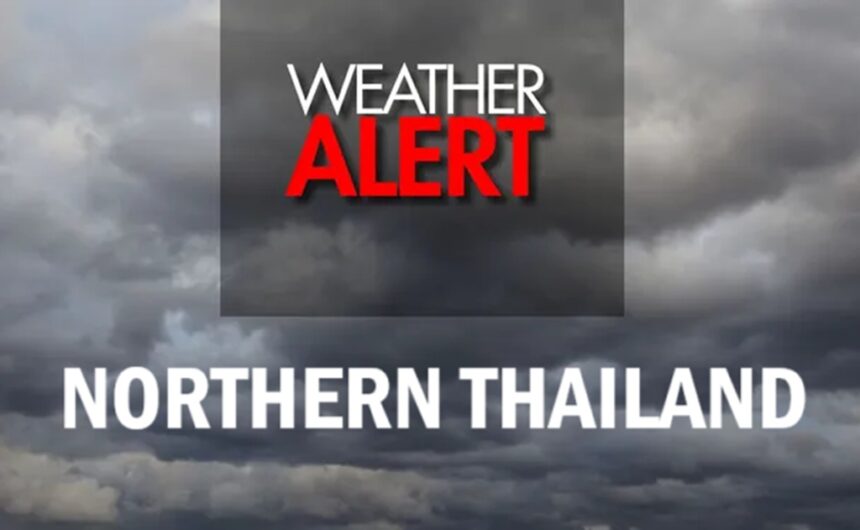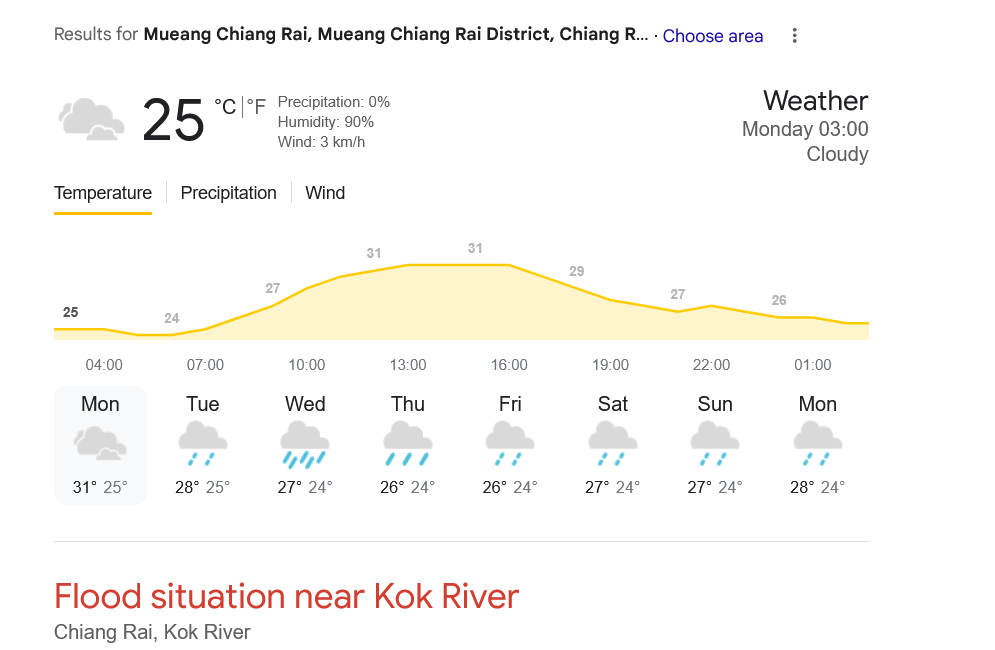CHIANG RAI – The Department of Disaster Prevention and Mitigation has issued urgent warnings for 22 provinces in the North and Northeast regions of Thailand due to imminent flash floods and landslides.
Residents in these risk areas are strongly advised to evacuate immediately to ensure their safety. Continuous monitoring and assessments are being conducted to evaluate the severity of the weather conditions and the resulting risks.
In anticipation of Tropical Storm Wipha, expected between 21 and 24 July, Chiang Rai and Chiang Mai have mobilized local resources. Teams are actively engaged in clearing silt and debris from the Ping and Kok rivers, crucial to facilitating better water flow.
Over 50 evacuation centers have been established to accommodate more than 5,000 evacuees, ensuring that they have access to necessities such as food, water, and medical care.
Charin Thongsuk, the governor of Chiang Rai, provided insights into the province’s emergency management strategy. He detailed that the risk areas have been classified into two categories: lowland regions prone to flooding near the Kok, Ping, and Mae Sai rivers, and mountainous regions susceptible to landslides and sudden floods.
This classification helps in deploying resources effectively and ensures that the response is tailored to the specific hazards of each area.
Local districts have received directives to expedite the removal of any blockages in waterways and to enhance drainage systems ahead of the storm. Designated safe locations have been established in every village for residents, their personal belongings, and livestock to seek refuge.
Kok River Flood Warning Chiang Rai
The evacuation plan has been modelled after successful strategies implemented in Chiang Rai’s Mae Sai district, ensuring that all residents receive proper guidance and support if conditions deteriorate.
The Department of Disaster Prevention and Mitigation, under the leadership of Director Phasakorn Boonnalak, has disseminated alerts following a critical three-hour emergency meeting conducted at 6:20 pm.
The storm’s trajectory suggests a significant impact on 22 northern and upper northeastern provinces, which include Nan, Phayao, Chiang Rai, Lamphun, Lampang, Phrae, Uttaradit, Chiang Mai, Mae Hong Son, Tak, Nong Khai, Bueng Kan, Nakhon Phanom, Sakon Nakhon, Nong Bua Lam Phu, Loei, Udon Thani, Kanchanaburi, Ratchaburi, Uthai Thani, Chanthaburi and Trat.
Nirun Phongsitthawan, the governor of Chiang Mai, reported that efforts are underway to clear 12 rivers within the province, with a particular focus on the Ping River, which is the primary waterway in the area.
Currently, 42% of the 22.5 kilometres of riverbanks in the city center have been successfully dredged, which is a significant step in mitigating potential flood risks. Continuous assessment and dredging operations will be crucial as the storm approaches.
The southern stretch of the river, measuring 8.5 kilometres, is currently 20% completed. Additionally, both major dams in the region, Mae Ngat and Mae Kuang, are actively releasing water to create additional capacity in anticipation of the expected rainfall.
This proactive measure is aimed at reducing the flood risk in low-lying areas and alleviating pressure on the drainage systems.
Evacuation Shelters Established
In Chiang Mai, authorities have established 54 evacuation shelters that can accommodate up to 5,655 individuals, with ample parking space for more than 10,500 vehicles.
Should the storm’s impact exceed initial forecasts, officials are prepared to request additional support from the central government, ensuring that all necessary resources are mobilized to assist affected communities.
Emergency response teams are on high alert, available around the clock, particularly during the peak risk period from 22 to 23 July.
Special attention is being given to vulnerable groups, including children, the elderly, and bedridden patients, who will be prioritized for evacuation from danger zones starting 21 July. This proactive approach is essential for safeguarding those most at risk.
Preparedness measures include the deployment of water pumps, ambulances, and flat-bottom boats to facilitate rescue and evacuation efforts. The main operation center, located in Phitsanulok, will coordinate assistance to the northern provinces.
Additionally, helicopters and air rescue teams stationed in Chiang Mai are ready to respond to emergencies in remote areas, ensuring rapid deployment of aid and assistance.
Broadcasted Alert Chiang Rai and Chiang Mai
The Department of Disaster Prevention and Mitigation has issued warnings via Cell Broadcast and SMS at 5:55 pm today to enhance public awareness. The alerts emphasize the need for vigilance among communities situated in low-lying and hillside areas, as they should remain alert for flash floods, rising river levels, and potential mudslides.
Residents are urged to relocate their belongings to higher ground, prepare for possible evacuations, and monitor the well-being of vulnerable individuals.
Residents residing in at-risk zones are strongly encouraged to elevate their valuables, stay prepared for a rapid departure if necessary, and remain attentive to the needs of children, elderly family members, and individuals who may require assistance.
Emergency management officials are continuously monitoring the evolving situation and will conduct evaluations of any damage once the immediate threat has subsided, allowing for a swift response in providing aid and resources to affected communities.
Individuals living in danger zones within both Chiang Mai and Chiang Rai are urged to remain vigilant and adhere to all official updates and instructions provided by local authorities.
These precautionary measures are essential to ensuring the safety of families and minimizing potential risks associated with the storm. Community resilience and preparedness will play a pivotal role in navigating the challenges posed by severe weather.
The actions taken by local authorities and disaster management teams are aimed at safeguarding residents from the impacts of Tropical Storm Wipha. Ongoing communication and cooperation among communities, emergency responders, and government agencies are critical in ensuring that everyone is informed and prepared.
Residents should take all warnings seriously and follow recommendations to keep themselves and their families safe during this severe weather event.















